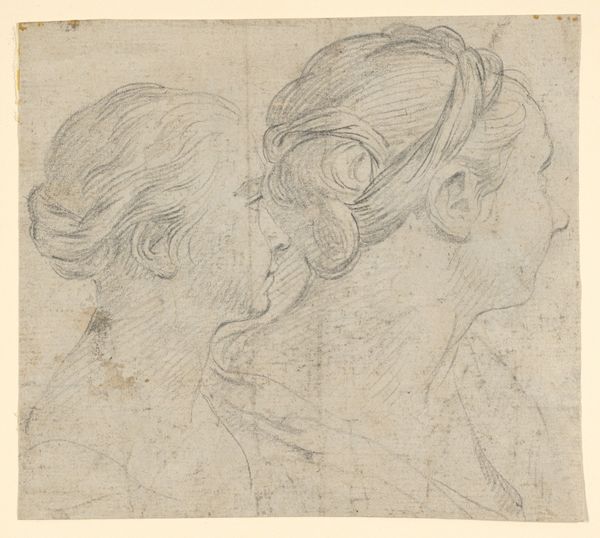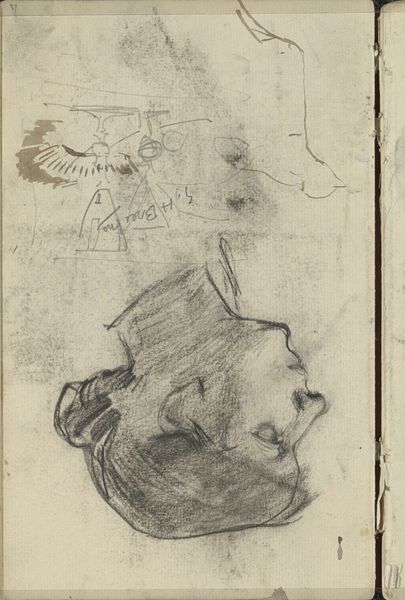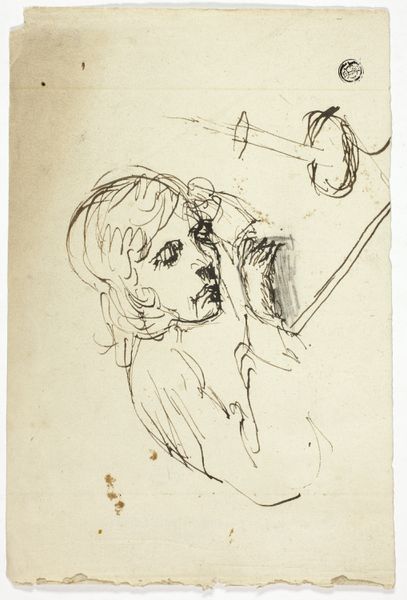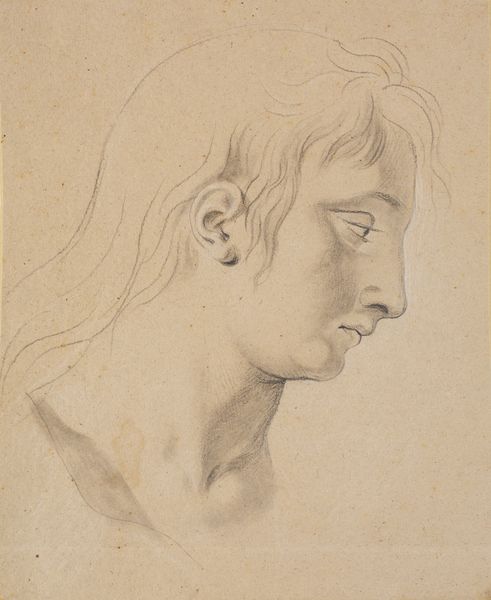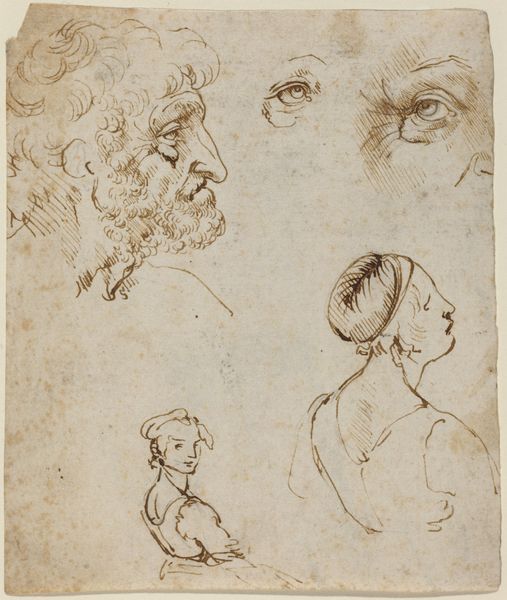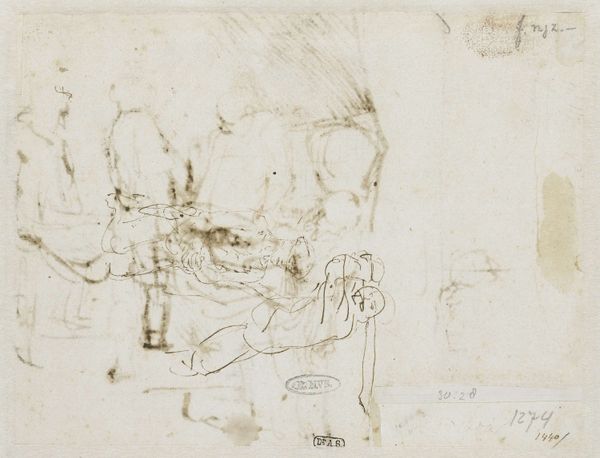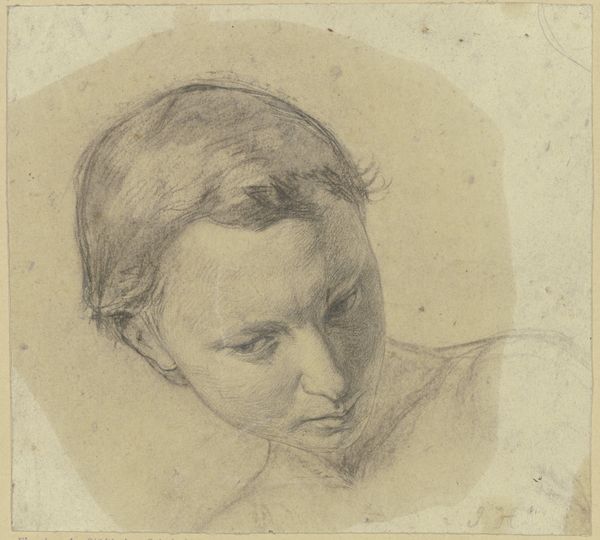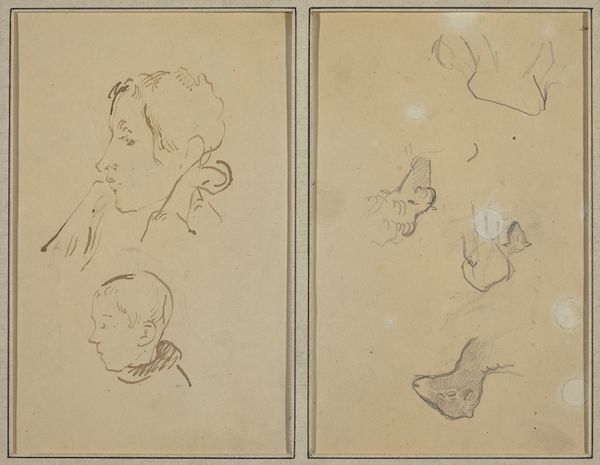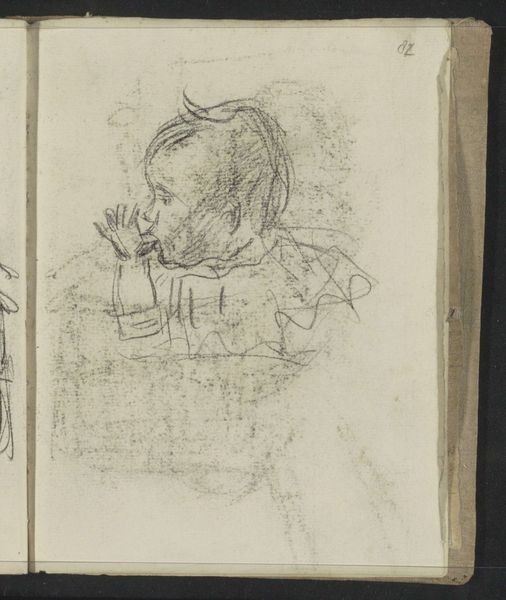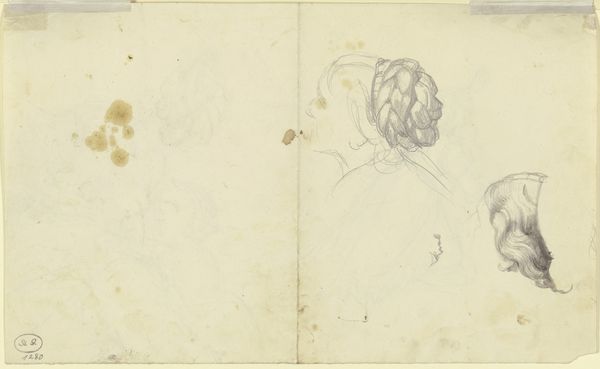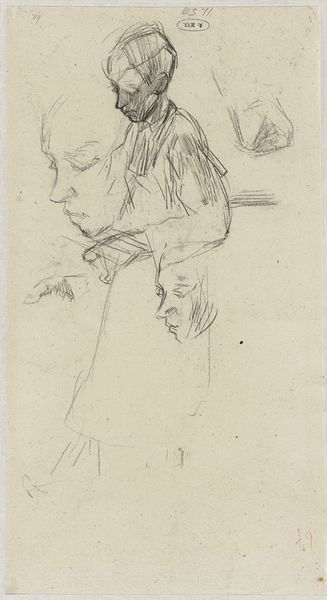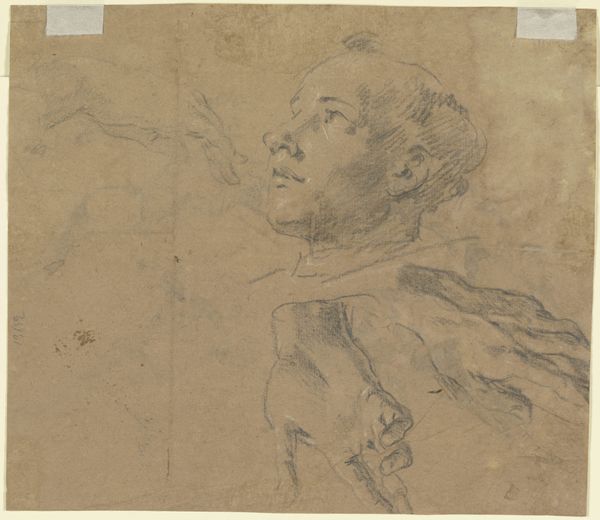
Forskellige rids.: To mandshoveder i profil efter antikt forbillede, en rytter på en hest o.m.a. 1840s
0:00
0:00
drawing, paper, ink, pencil
#
portrait
#
drawing
#
classical-realism
#
paper
#
ink
#
pencil
#
line
#
academic-art
Dimensions: 211 mm (height) x 172 mm (width) (bladmaal)
Editor: This sketch, “Forskellige rids" from the 1840s, attributed to Dankvart Dreyer, presents a collection of studies in pencil and ink on paper. The contrast between the detailed profiles and the quick renderings of figures and architecture makes the sheet quite dynamic. What can you tell us about Dreyer's motivations and the artistic culture reflected here? Curator: This drawing sheet speaks volumes about 19th-century artistic training and the pervasive influence of classical ideals. Dreyer, like many artists of his time, engaged with the past. We see him practicing the "academic" style by copying antique models. Notice the emphasis on the ideal human form, particularly in the two head studies. Why do you think artists of this period looked so fervently to classical antiquity? Editor: Maybe they saw it as a standard of excellence, a source of authority to legitimize their own art? It seems like more than just copying, though. What’s the purpose of juxtaposing these studies with fleeting sketches of riders and buildings? Curator: Precisely. It wasn't merely replication, but an engagement with an idealized past to elevate contemporary artistic practice. By juxtaposing the "high art" of classical figure drawing with more casual sketches, Dreyer reveals the layered process of artistic development. Do you think this sheet was intended for public display, or does it tell us something different? Editor: I think this was definitely for his own practice, more about developing skills and ideas. Thank you, seeing the art this way really sheds light on art education at the time! Curator: Exactly, this functions like a historical snapshot, reflecting both artistic aspiration and the institutions that shaped artistic practice. Thinking about sketches this way can teach us so much about the power of art in society.
Comments
No comments
Be the first to comment and join the conversation on the ultimate creative platform.
